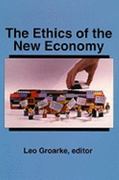Question
11.When P X = $60, MP X = 2 and MP Y = 2, relative employment levels are optimal provided: a.P Y = 16.7. b.P
11.When PX = $60, MPX = 2 and MPY = 2, relative employment levels are optimal provided:
a.PY = 16.7.
b.PY = $24.
c. PY = $60.
d. PY = $150.
12.When PX = $100, MPX = 20 and MRQ = $5, the marginal revenue product of X equals:
a.$100.
b.$50.
c. $10.
d. $5.
13.If total product for each of five units of labor is 10, 16, 20, 30, and 34, respectively, the marginal product of the third unit is
a.
20
b.
10
c.
4
d.
0
14.If P = $8 and MC = $5 + Q, the competitive firm's profit-maximizing level of output is:
a.
3
b.
0.2
c.
8
d.
15
15.If fixed cost at Q = 100 is $130, then
a.
fixed cost at Q = 0 is $0
b.
fixed cost at Q = 0 is less than $130
c.
fixed cost at Q = 200 is $260
d.
fixed cost at Q = 200 is $130
16.If variable cost rises from $60 to $100 as output increases from 15 to 20 units, the marginal cost of the twentieth unit
a.
is $100
b.
is $5
c.
is $40
d.
is $8
17.Suppose Guild produces 5,000 guitars per year. Its average total cost is $90, and its fixed cost is $250,000. What is its variable cost?
a.
$250,000
b.
$450,000
c.
$25,000
d.
$200,000
18.If an increase in the price of a product from $1 to $2 per unit leads to a decrease in the quantity demanded from 100 to 80 units, then the value of price elasticity of demand is
a.
-1/3
b.
-2 1/3
c.
-1/4
d.
-3
19.So long as P > AVC, the competitive firm's short-run supply curve is equal to:
a.
AVC
b.
MC
c.
P
d.
none of these.
20.At the profit maximizing level of output for a monopolist:
a.
P = AR and AR = AC
b.
P > MC and MR = MC
c.
P = MC and MR > MC
d.
P = MR and AC = MC
Step by Step Solution
There are 3 Steps involved in it
Step: 1

Get Instant Access to Expert-Tailored Solutions
See step-by-step solutions with expert insights and AI powered tools for academic success
Step: 2

Step: 3

Ace Your Homework with AI
Get the answers you need in no time with our AI-driven, step-by-step assistance
Get Started


